For many wishing to discover Alsace, organising an itinerary is not an obvious idea. Which sites to visit? Which towns and villages are worth a visit? Having travelled through Alsace from north to south and from the Vosges to the Rhine, the region has (almost) no secrets for me. So I can help you to organise a beautiful trip to Alsace. This ambitious tour of Alsace will take you along an entire route around the region in 12 days. The 765 km long tour along the roads of Alsace will reveal the historical, cultural and architectural treasures between the Rhine and the Vosges.
An unforgettable Tour of Alsace

Alsace Wine Route © French Moments
When Louis XIV passed through the Saverne Pass and discovered Alsace for the first time, he would have exclaimed:
"Ah, what a beautiful garden this is!"
A tour of Alsace is truly inspiring for the variety of its landscapes between the Vosges and the Rhine.
The road winds through the vineyards and plays hide-and-seek in the forests, revealing itself at the bend in the fields and meadows, before entering prosperous towns with old roofs on which storks nest.
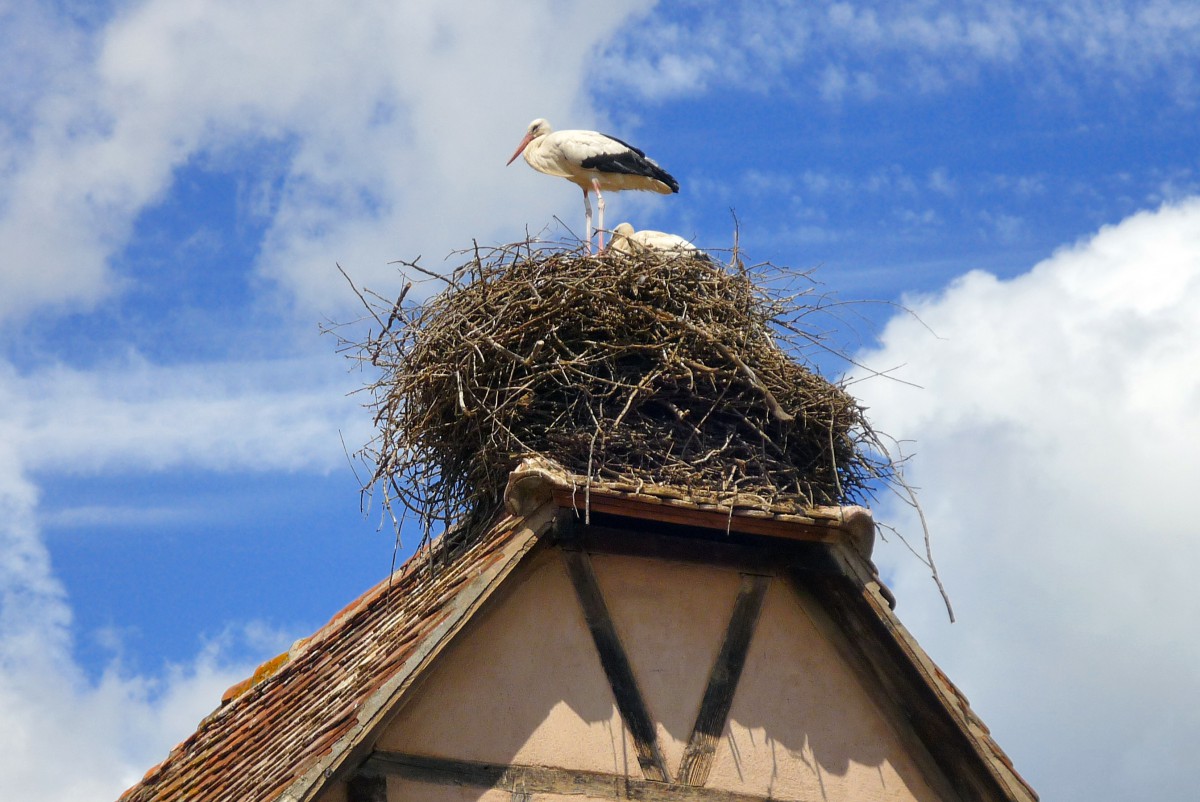
A white stork in its nest in Alsace © French Moments
Standing on the summits of the Vosges, the ruined castles still watch over the ancestral passageways.
Alsace is a region with a solid cultural identity, from the fantastic Gothic cathedral of Strasbourg to the charming half-timbered houses. It is this exceptional country that I invite you to discover by following this tourist circuit.
12 days starting from Strasbourg

Strasbourg © French Moments
I propose you discover the region through an exclusive itinerary starting from Strasbourg. This Grand Tour of Alsace (a 765 km/475 mi long tour) will allow you to explore many of the region's sights.
Of course, you are free to use this as inspiration to plan your itinerary. You can either :
- Lighten the Alsace tour by reducing the number of stages
- Spend more time on one particular stage
Here is the plan for the 12 Days (D) Tour of Alsace:
D1 - Strasbourg (night in Strasbourg)
D2 - Haguenau, Outre-Forêt and Wissembourg (night in Wissembourg)
D3 - The Northern Vosges (night in Saverne)
D4 - Saverne, Obernai and Mont-Sainte-Odile (night in Obernai)
D5 - Barr, Andlau, Dambach-la-Ville and Sélestat (night in Sélestat)
D6 - Haut-Kœnigsbourg, Saint-Hippolyte and Bergheim (night in Ribeauvillé)
D7 - Ribeauvillé, Hunawihr and Riquewihr (night in Colmar)
D8 - Colmar and Eguisheim (night in Eguisheim)
D9 - Turckheim and Kaysersberg (night in Kaysersberg)
D10 - The Route des Crêtes (night in Thann)
D11 - Sundgau, Jura alsacien and Mulhouse (night in Mulhouse)
D12 - The écomusée d'Alsace, Guebwiller, Rouffach and Neuf-Brisach (back to Strasbourg)
Rent a Car for Your Tour of Alsace
Find the perfect rental car for your Tour of Alsace!
Discover Cars is a leader in online car rental reservations. Their website compares car rental deals from many companies so that you can choose which is best for your trip.
What's good about it? Well, many other websites hide fees and extra costs from you. Discover Cars includes all mandatory fees, taxes, and extras in the quoted price so there won’t be any surprises when you arrive at the rental desk.
Discover Cars is proud to have been named the World's Leading Car Rental Booking Website in the past two years and honoured to be listed on the prestigious list of the fastest-growing companies in Europe compiled by the Financial Times.
Day 1 - Strasbourg

Tour of Alsace - District of the Petite France, Strasbourg © French Moments
This trip to Alsace starts naturally in Strasbourg, the capital of the historical and cultural region Alsace, of the Grand-Est region and one of the capitals of Europe. Strasbourg is a treasure trove of architecture, especially for its districts:
- the Grande Île, the historic centre of Strasbourg, dominated by the cathedral,
- the German imperial quarter and
- the district of the European institutions.
Don't miss the picturesque Petite-France and Ponts Couverts districts. Strasbourg is also home to several museums, including three in the Palais-Rohan. As soon as night falls, the beautiful illuminations of Petite-France, notably the cathedral, will dazzle you!
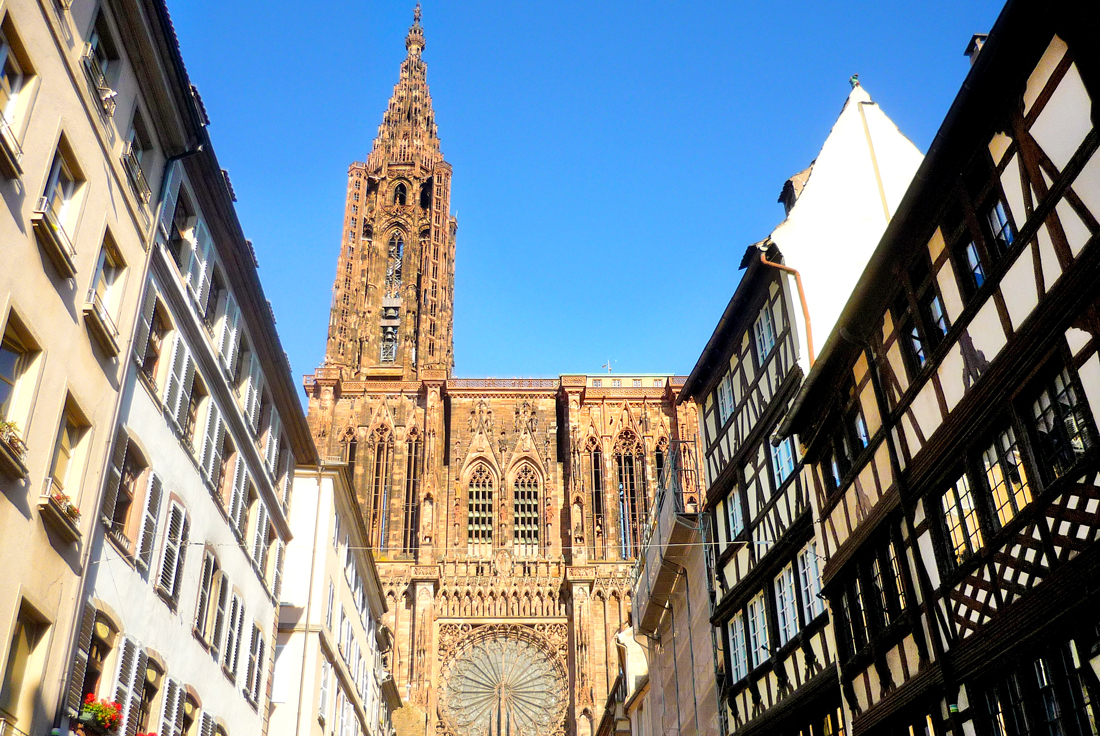




Day 2 - Haguenau, Outre-Forêt and Wissembourg
🚙 77 km / 48 mi

Rue des églises, Seebach © French Moments
Head for the north of Alsace, passing through Haguenau, an old town bordering the largest forest in Alsace. After crossing the Haguenau forest, you enter the Outre-Forêt region.
Here you will find two of the most beautiful villages in the area: Seebach and Hunspach. Wissembourg, on the border of the Palatinate in Germany, will charm you with its historic centre.





Day 3 - The Northern Vosges
🚙 111 km / 69 mi

La Petite-Pierre in the Northern Vosges © French Moments
Take the Pigeonnier pass to reach one of the most beautiful ruins in France: the Fleckenstein castle.
Vauban fortified La Petite-Pierre and its castle. Enjoy magnificent views over the countryside and the high wooded hills. Don't miss the troglodytic houses of Graufthal carved into the pink Vosges sandstone cliff.
On the way to Saverne, linger in Neuwiller-lès-Saverne to admire the beautiful St-Pierre-et-St-Paul church. Once in Saverne, discover its castle and its marina. Spend the night there.



Château des Rohan, Saverne © French Moments
Day 4 - Saverne, Obernai and Mont-Sainte-Odile
🚙 70 km / 44 mi

Obernai © French Moments
Leaving Saverne to the south, head towards Marlenheim, the northern gateway to the famous Alsace Wine Route. Note the beautiful Romanesque church of Marmoutier shortly after leaving Saverne.
You'll be spoilt for choice when visiting towns and villages with beautiful half-timbered houses: Wangen, Molsheim, Rosheim and Bœrsch are among my favourites.


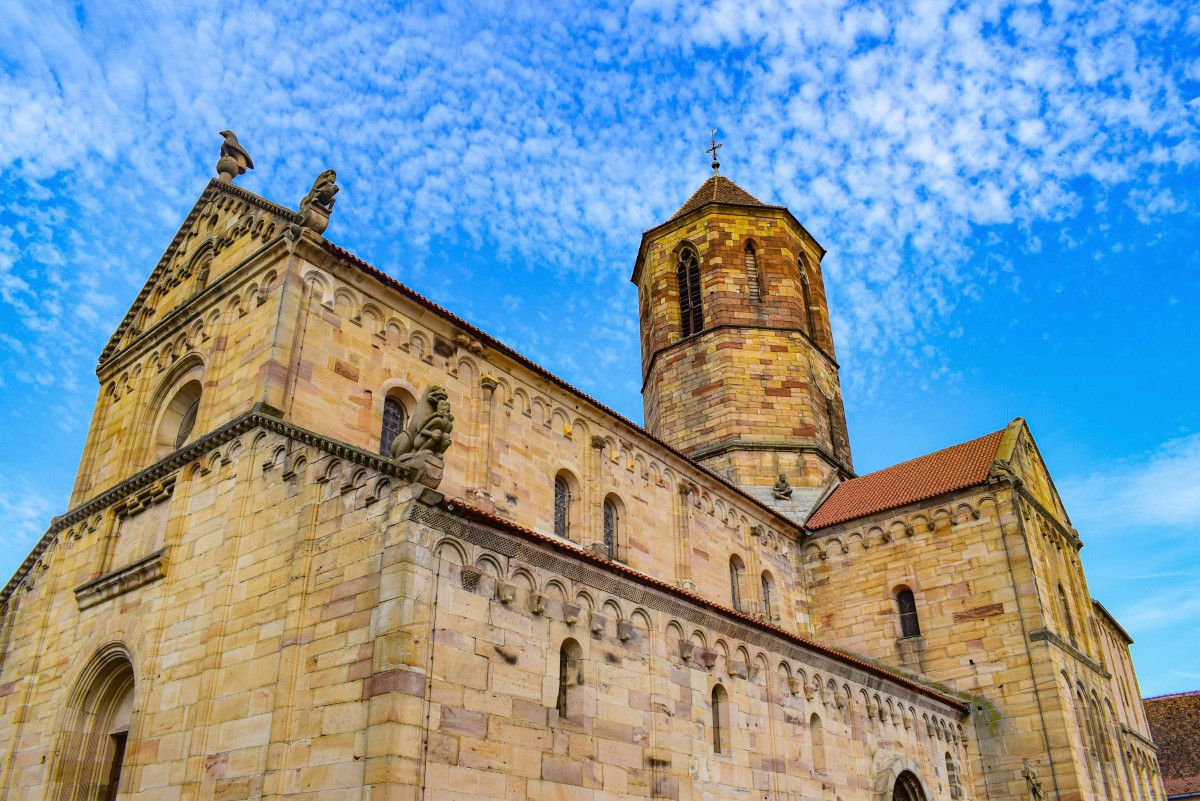
Before heading to Obernai, where you will spend the night, climb Mont Sainte-Odile to admire one of Alsace's most beautiful panoramic views. From the convent of Sainte-Odile, you can see the city of Strasbourg and its cathedral and the Black Forest in the distance.

Mont Sainte-Odile © French Moments
Of course, don't miss a walk through the streets of Obernai, the most visited town in the Bas-Rhin département after Strasbourg. You will spend the night there.

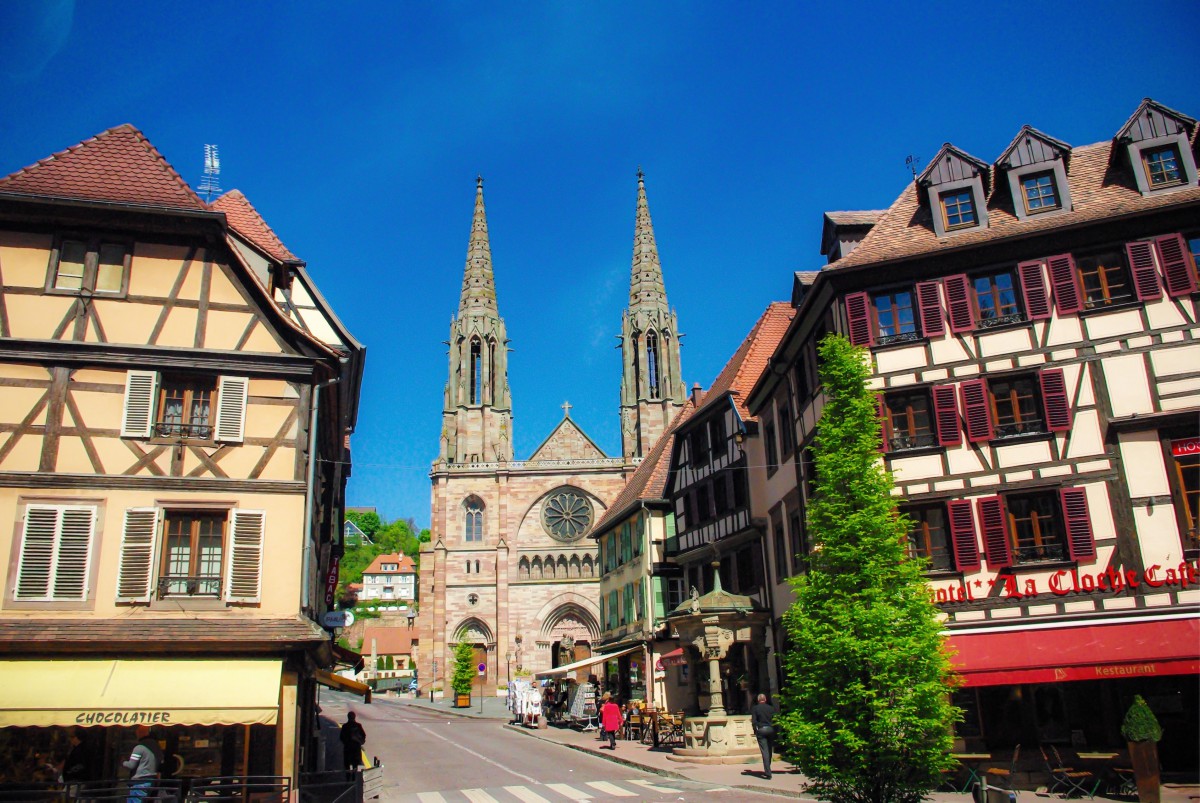
Day 5 - Barr, Andlau, Dambach-la-Ville and Sélestat
🚙 32 km / 20 mi

Place du marché aux choux, Sélestat © French Moments
Today, you will drive along the Alsace Wine Route to Sélestat. You will pass through some very beautiful sites: Barr, Andlau, Mittelbergheim and Dambach-la-Ville. You will find the same atmosphere everywhere, that of cities flourishing thanks to the culture of the vine.
Then go to Sélestat, ideally situated between Strasbourg and Colmar. Discover the rich architectural and cultural heritage of the city (Humanist Library, Gothic church of St Georges and Romanesque church of St Foy). Stay overnight.
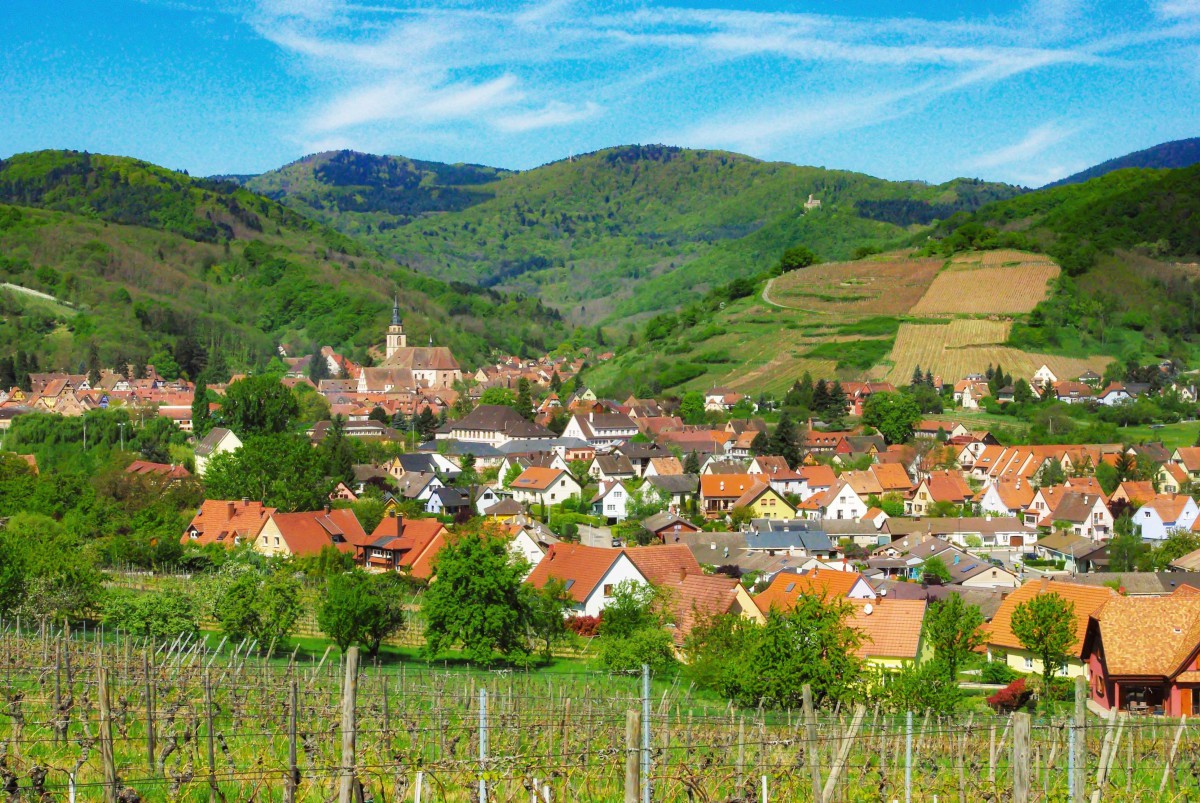



Day 6 - Haut-Kœnigsbourg, Saint-Hippolyte and Bergheim
🚙 31 km / 19 mi
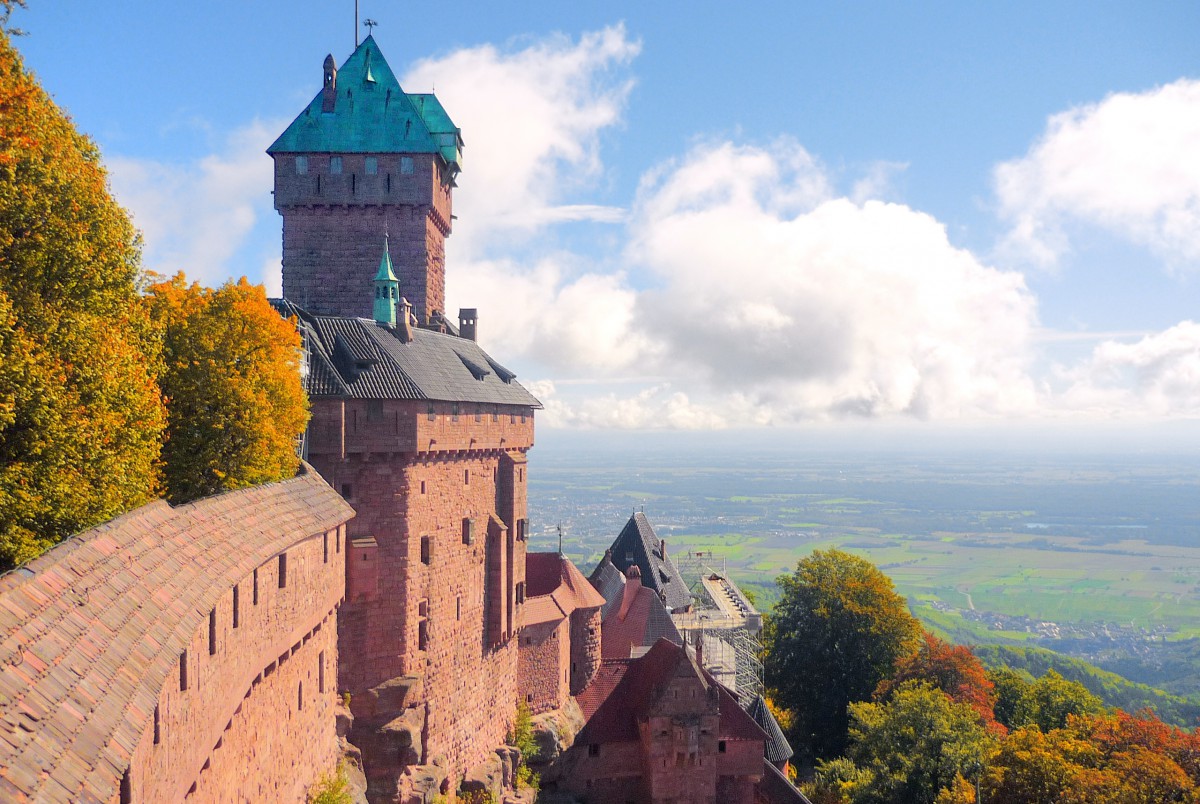
Haut-Kœnigsbourg Castle © French Moments
In the morning, climb to the Haut-Kœnigsbourg to be among the first to enter the castle at its opening.
After your visit, head back down to the plain and continue your discovery of the Alsatian vineyards and their charming villages: Saint-Hippolyte and Bergheim. If you have time, walk around the ramparts of Bergheim. Join Ribeauvillé and spend the night there.
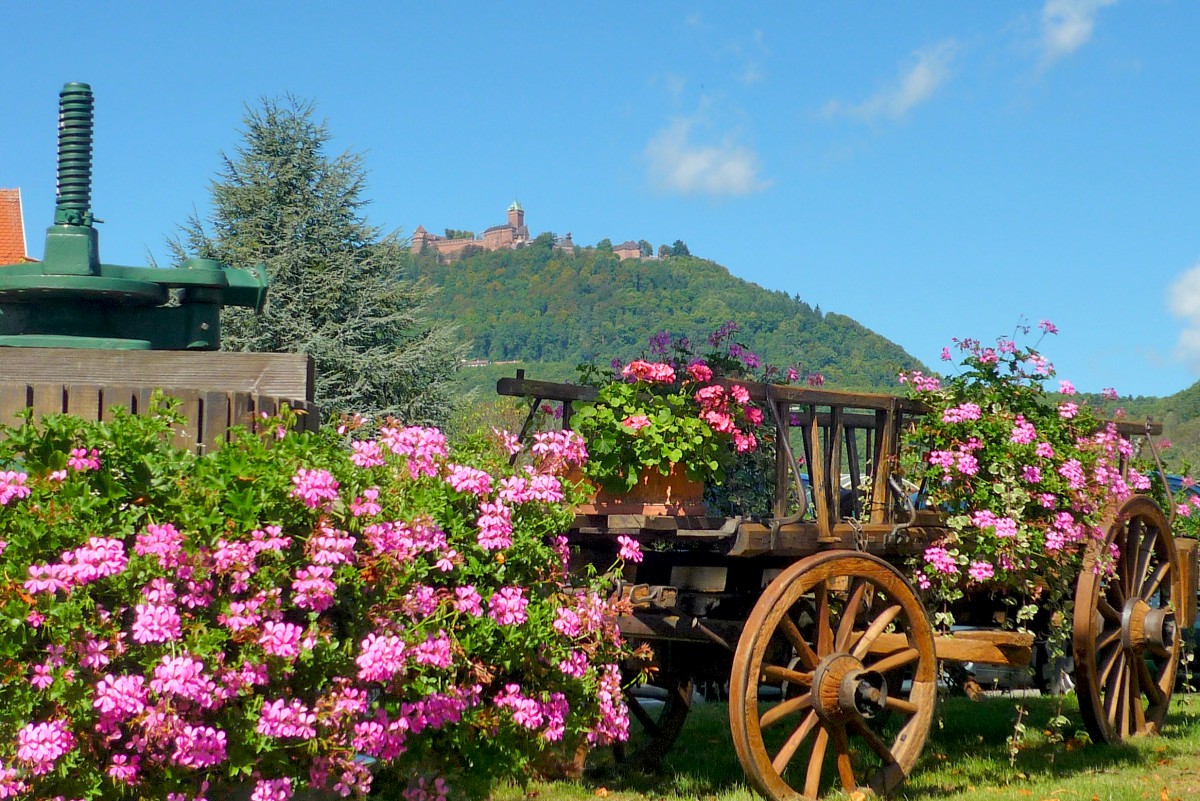



Day 7 - Ribeauvillé, Hunawihr and Riquewihr
🚙 22 km / 14 mi

The village of Riquewihr in Alsace © French Moments
Visit the historic centre of Ribeauvillé in the morning, then follow the Wine Route to explore the villages of Hunawihr and Zellenberg. Then head to Riquewihr, one of the most beautiful villages in France. Take time to stroll along the narrow streets that cross the Grand-Rue. Then head to Colmar to wander the streets of the old town at dusk.




Day 8 - Colmar and Eguisheim
🚙 7 km / 4 mi

The Little Venice of Alsace in Colmar © French Moments
There is much to see in Colmar, the capital of Alsace wines. From the Little Venice to the picturesque Rue des Marchands, and from the Ancienne Douane to the Collégiale St Martin. Don't miss the beautiful collections of the Unterlinden Museum, including the famous Issenheim Altarpiece.
In the middle of the afternoon, you will go to the nearby village of Eguisheim, where you will spend the night. Awarded the title of the favourite village of the French, Eguisheim will seduce you with its narrow streets lined with beautiful half-timbered houses.


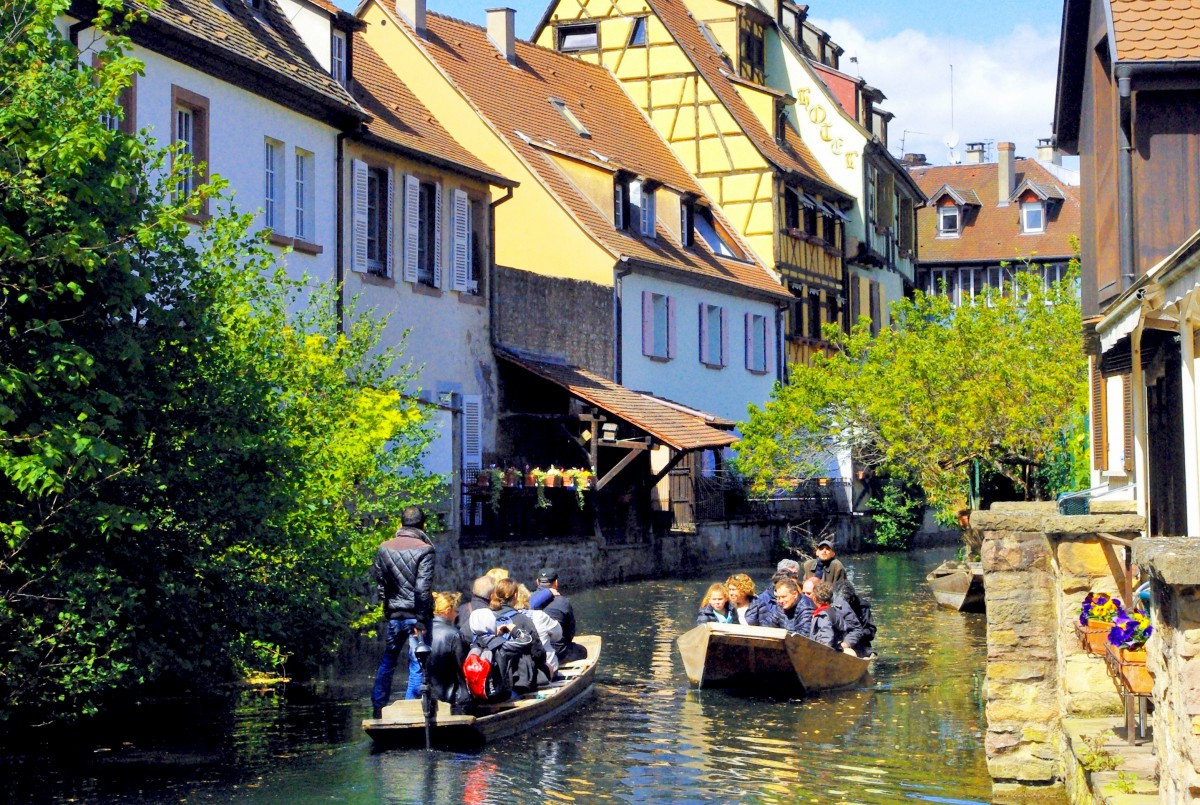

Day 9 - Turckheim and Kaysersberg
🚙 27 km / 17 mi
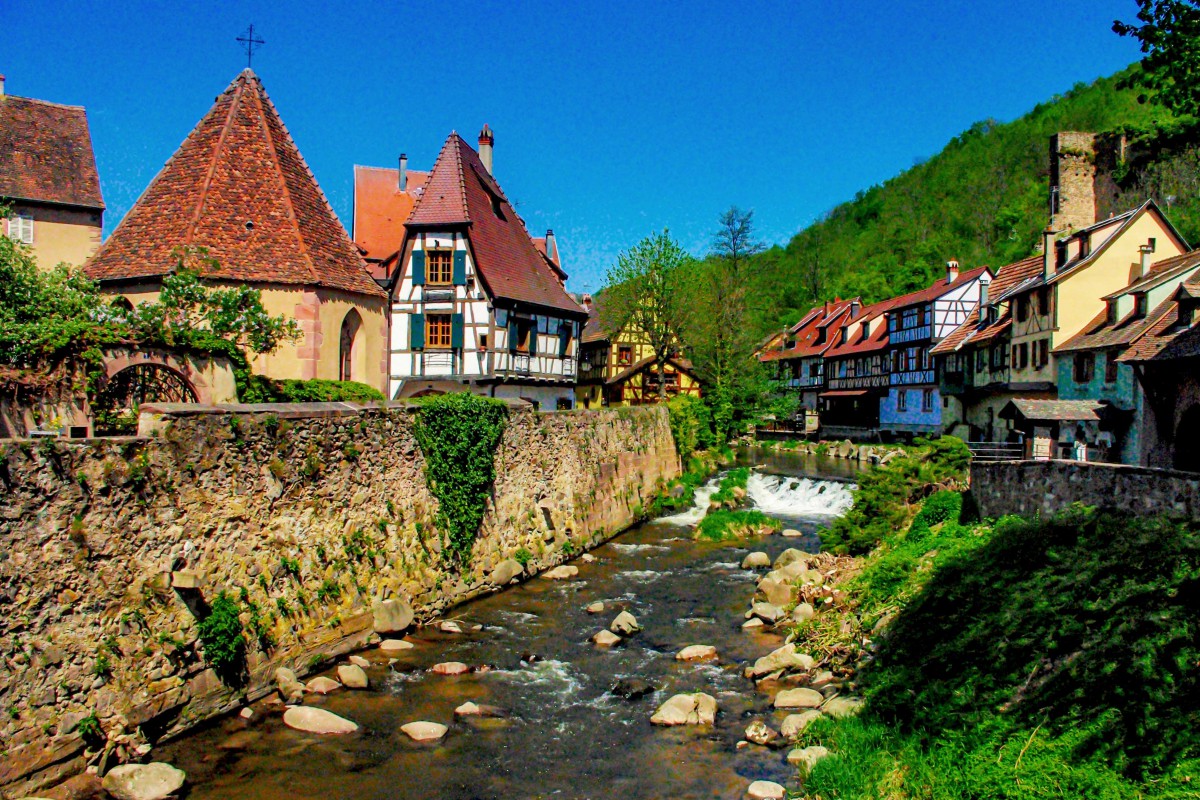
Tour of Alsace - Kaysersberg © French Moments
First stop: the historic town of Turckheim on the edge of a prestigious vineyard. Continue by discovering the small village of Niedermorschwihr, whose church spire is twisted. Next stop: the Sigolsheim cemetery, a place of remembrance where hundreds of graves recall the fierce fighting in the Colmar pocket in 1944-45. A stone's throw from there, here is Kientzheim, one of the only villages still entirely fortified in Alsace. Go to Kaysersberg and enjoy the nighttime atmosphere of the former imperial town.
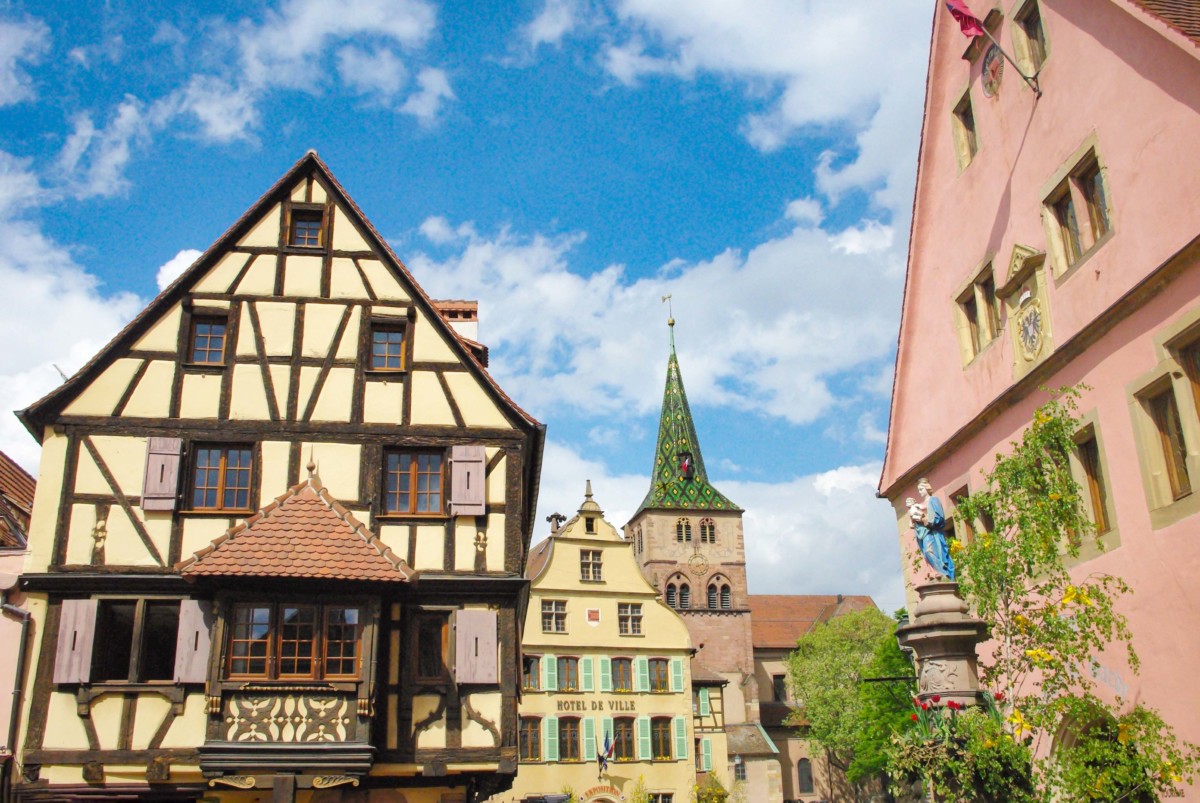
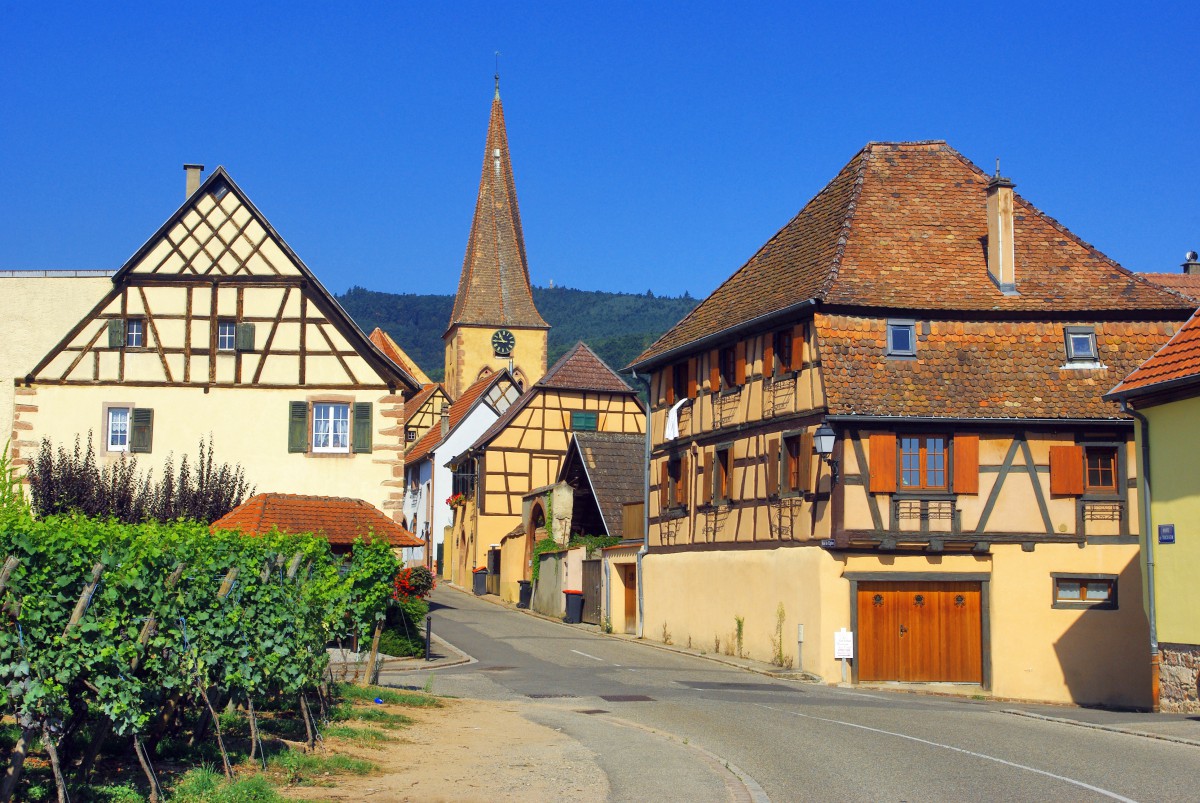


Day 10 - The Route des Crêtes from Kaysersberg to Thann
🚙 100 km / 62 mi
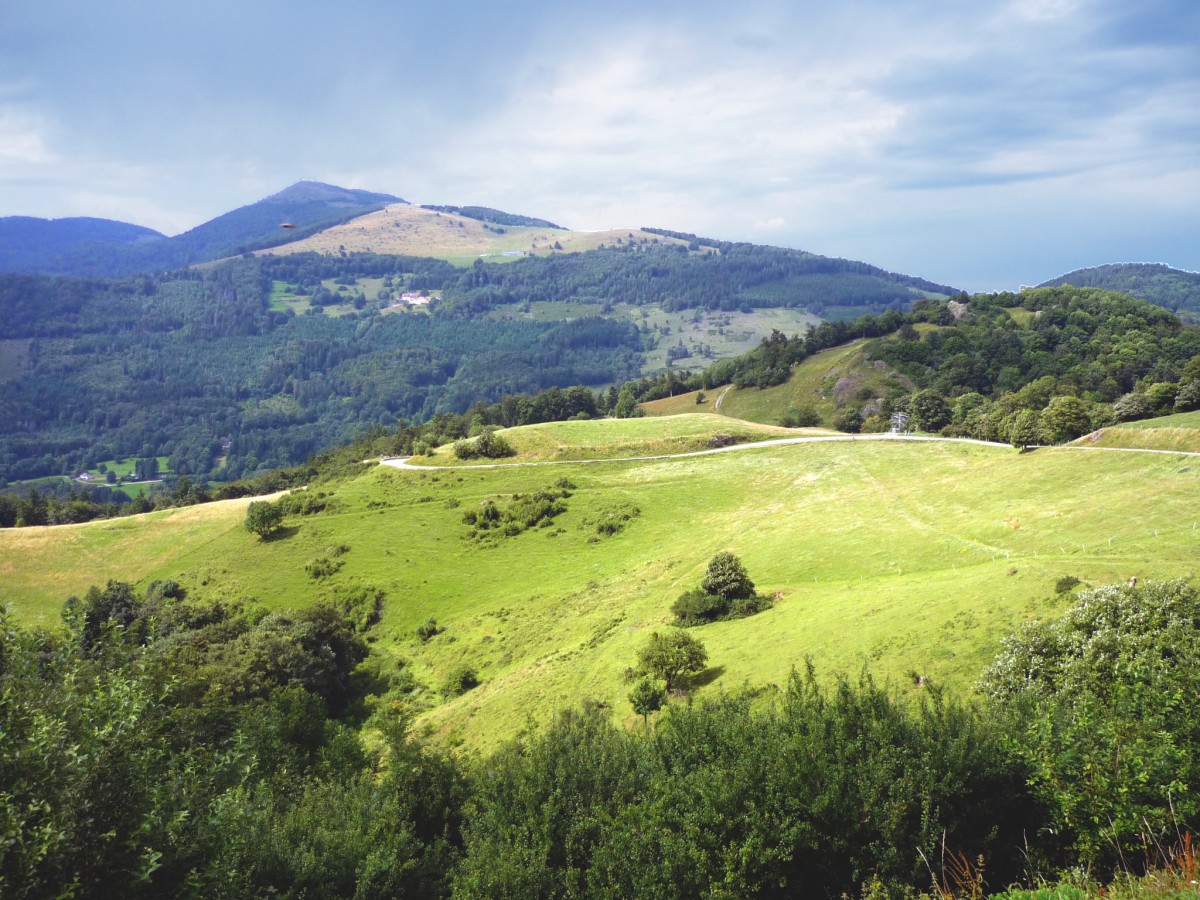
View of the Grand Ballon from the Route des Crêtes © French Moments
Stroll through the streets of Kaysersberg in the morning, then head into the Kaysersberg valley to join the Route des Crêtes des Vosges via Orbey at the Col du Calvaire pass. This road, laid out during the First World War, marks the border between Lorraine and Alsace. Spectacular panoramas await you along the route. Don't forget to take a break to admire the landscape: at the Gazon du Faing, the Hohneck and the Grand-Ballon.
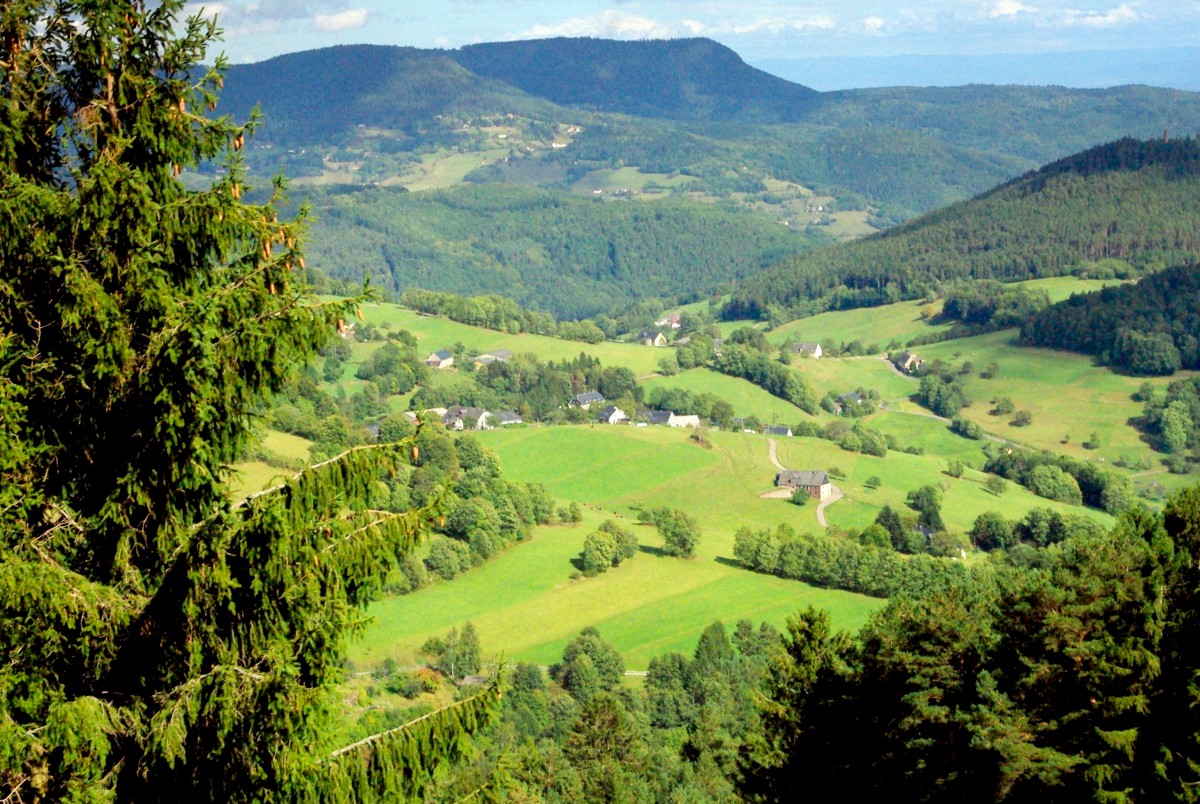

Head back down to the plain, stopping at the Vieil Armand, a place of remembrance of the Great War. Before nightfall, visit the town of Thann and take advantage of being there to discover the splendid collegiate church of Saint-Thiébaut in Thann.


Day 11 - Sundgau, Jura alsacien and Mulhouse
🚙 135 km / 84 mi
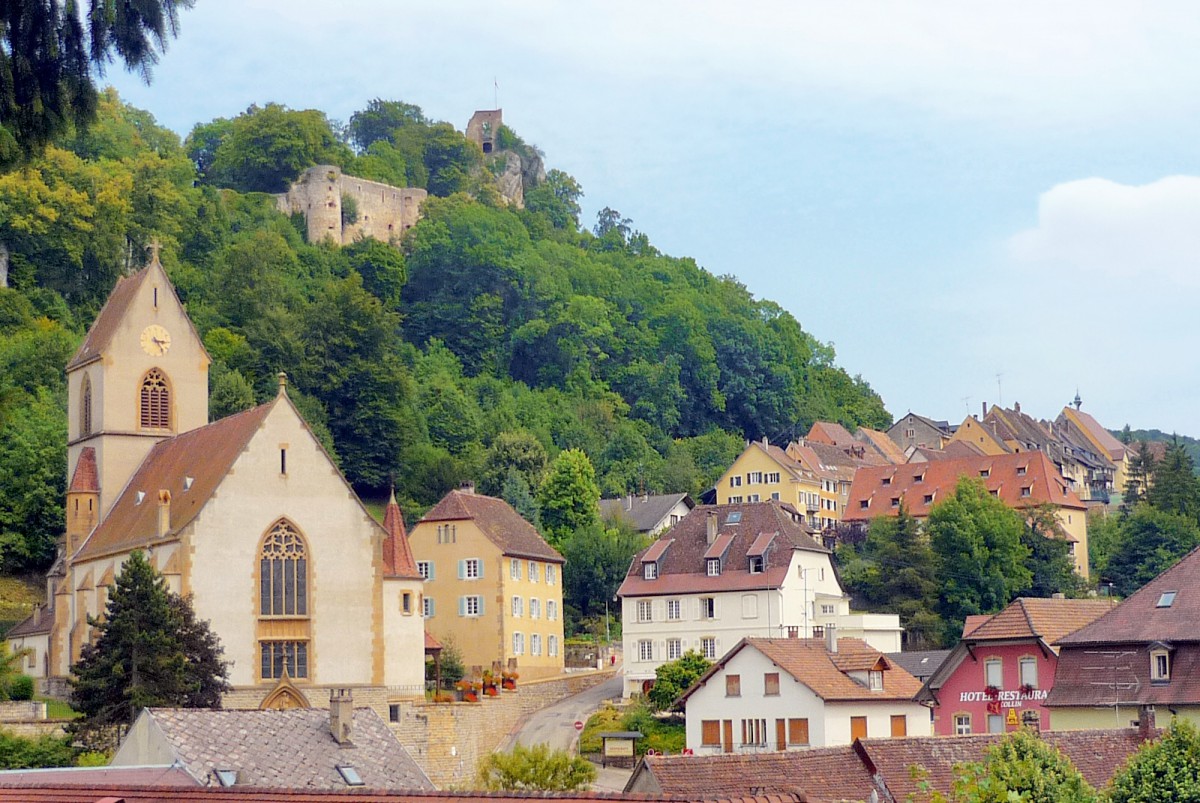
Tour of Alsace - Ferrette © French Moments
On the programme for this second to last day: Mulhouse and the Sundgau, the southernmost region of Alsace.
Start by heading to Altkirch, the capital of the Sundgau region. After a short visit, drive through the charming villages of Hirtzbach and Hirsingue towards Ferrette. Take a break in the count's town of Ferrette and climb to the castle ruins to enjoy a splendid view of the Sundgau hills, the Vosges and the Black Forest. Go to Lucelle, then to the Landskron castle before heading to Mulhouse. If you still have some time left in the late afternoon, you might be interested in one of the city's technical museums.




Day 12 - Ecomusée d'Alsace and Neuf-Brisach
🚙 152 km / 94 mi

Tour of Alsace - Ecomusée d'Alsace © French Moments
This last stage of the trip in Alsace will be the longest as the route will take you back to our starting point: Strasbourg. You can plan to cut the route in half and stay one extra night in Colmar.
You leave Mulhouse for Ensisheim, the former capital of Anterior Austria (until 1648). Worth seeing: the Palais de la Régence, in Renaissance style.
Nearby is the Ecomusée d'Alsace. Comprising a reconstructed village, the open-air museum showcases Alsace's rural and artisanal heritage at the end of the 19th century.




Follow the road to Guebwiller, famous for its beautiful churches: Saint-Léger (late Romanesque), Notre-Dame (Baroque and neo-Classical) and the Dominican convent (Gothic).
Further north, Rouffach is a historical town renowned for its beautiful Renaissance stone houses and the Gothic church of Notre-Dame de l'Assomption.


On the way to Strasbourg, linger in Neuf-Brisach, Vauban's former stronghold facing Germany. Drive along the Rhine to Plobsheim. In the south of the village is an old, partly half-timbered chapel: Notre-Dame-du-Chêne (15th century).

Tour of Alsace - The Belfort Gate in Neuf-Brisach © French Moments
Pass Alsace: a good way to discover the region
If you plan to visit several cultural sites and attractions in the region, it may be worthwhile to buy a Pass Alsace.
You'll enjoy free admission to 58 sights, including nature parks, castles, museums and lots of other fun activities at reduced prices throughout Alsace.
Examples of places to see: castle of Fleckenstein, the rock houses in Graufthal, a choice of two museums in Strasbourg, the Haut-Kœnigsbourg castle, the humanist library of Sélestat, the écomusée d’Alsace, the zoological and botanical park of Mulhouse…
Please note: the Alsace Pass is valid for 3 days.
Other sites to discover on a Tour of Alsace
It is almost impossible to discover a whole region by limiting your Grand Tour of Alsace to 12 days. If you wish to continue your exploration, I recommend the following sites, which can be visited with a few small detours on the initial route:
- The parc du Petit-Prince
- The Alsace Wine Route from Eguisheim to Thann (Soultz-Haut-Rhin, Gueberschwihr, Husseren-les-Châteaux, Hohlandsbourg Castle...)
- The natural region of Alsace Bossue
- The Donon massif
- The valley of Munster
- The Doller valley and Ballon d'Alsace
- Belfort, the lion and citadel
- Trips to Switzerland and Germany: the Baden wine route from Basel to Karlsruhe, the Palatinate wine route and the imperial city of Speyer
Did this article help you plan your tour of Alsace? Share it on Facebook, Twitter or Pinterest: it will encourage me to publish future articles! 🙂

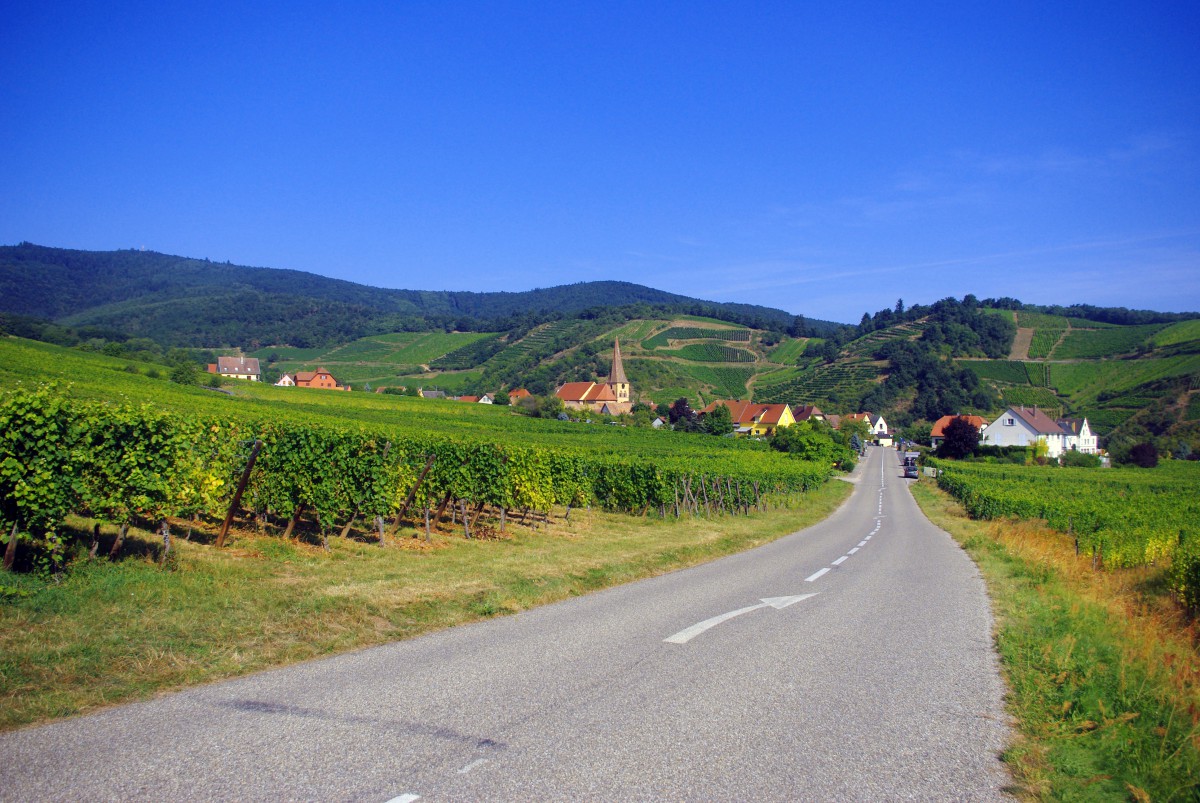






Bonjour Pierre,
Great article. We visited Strasbourg a few years ago and this brought back so many great memories.
We’re planning a trip to Bordeaux, Dordogne area and Lourdes in April, so I wondered if you had a similar article.
Kind regards
Rob
Thank you Rob. I have published some articles about the Dordogne and Bordeaux (but they need a little revamp!), here’s a short list:
– Bordeaux
– Périgord
– Dordogne Valley in Périgord Noir
Hope this will help! 🙂
Have a nice week
Fabulous, thanks Pierre